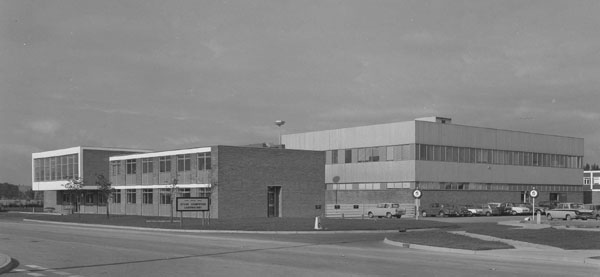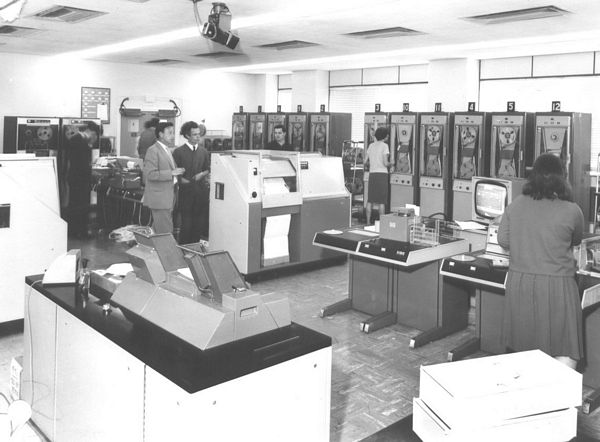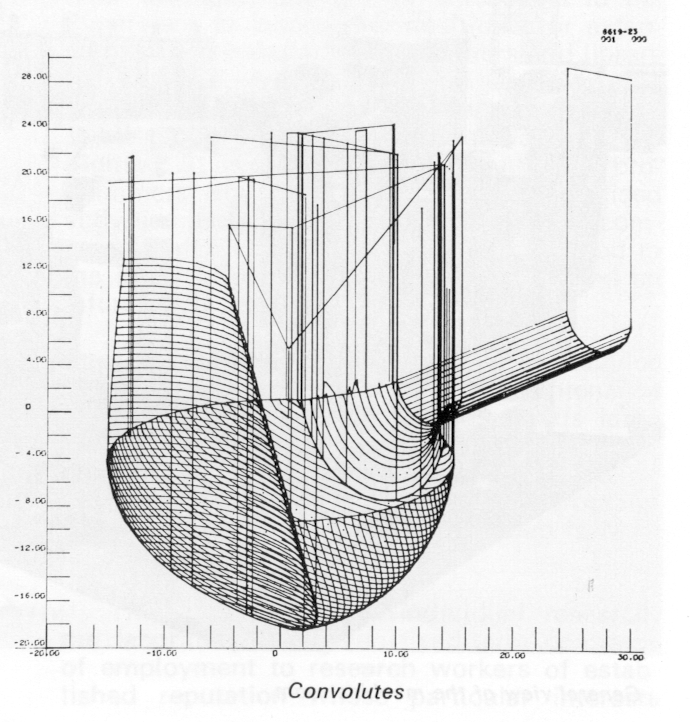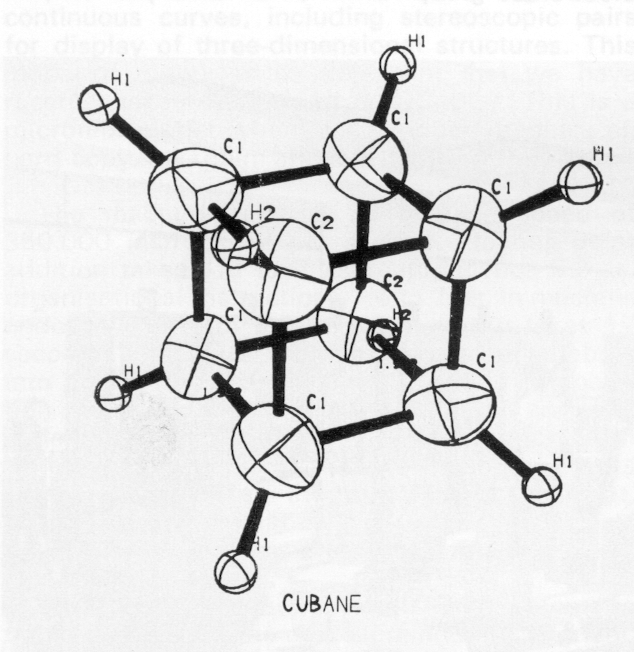

The Atlas Computer Laboratory was set up in 1961 with Dr. J. Howlett, then Head of the Computing Group at AERE, as Director. The laboratory was originally administered by the former National Institute for Research in Nuclear Science and was incorporated in SRC in April 1965. The aim of the laboratory is to provide computing facilities on a large scale - with all necessary supporting services - to research workers in universities and government laboratories. More specifically, to be a place to which they can turn when faced with problems needing more computing power than their local installations can provide. No charge is made to university users for any work done for them but Government users are charged at a rate which represents the cost of operating the laboratory.

The laboratory is on a site adjacent to the Rutherford High Energy Laboratory and the Atomic Energy Research Establishment (Harwell) of the UKAEA. Its main equipment is a large Atlas installation which was ordered from Ferranti (later merged with ICT) in the summer of 1961. A building was designed with the special needs of the computing service in mind and was ready for occupation in January 1964. The machine was installed during May and June of that year and a regular one-shift service was started in October. This has been extended as demand has increased and at the time of writing we are running three shifts five days a week; we expect to take up the weekend gradually over the next twelve months.
The installation is made up as follows:
Central Processor, 48K core store (2 µS cycle time) 96K magnetic drum store 8K fixed store (0.4 µs access time) 16K working store
The word length is 48 bits. The fixed store holds the basic routines and uses the working store as working space.
This is backed up by standard equipment for tape and card punching, card reproducers, interpreters and sorters. From the beginning we have had an off-line Benson-Lehner Model J graph plotter driven by magnetic tape, with a library of programs which may make it easy for a user to get output in the form of point plots, histograms or continuous curves, including stereoscopic pairs for display of three-dimensional structures. This mode of output is so important that we have recently taken delivery of an SC4020. This is a microfilm plotter which can produce graphics on hard-copy, microfilm and cine film.
The machine runs at an average speed of 350,000 instructions per second. Floating point addition takes 1.8 to 2 µs, multiplication 5.9 µs, organisational instructions 1.6 to 2 µs. In machine code, inversion of a 100 x 100 matrix takes 17 seconds, sorting 5,000 floating-point numbers into numerical order takes 1 second. The operation of the machine is automatic and is normally under the control of a permanent resident program called the Supervisor, which monitors all its activities, organises the time-sharing of input, output and computation and of a number of programs held in the store at the same time.
One part of its action deals with automatic transfers between the core store and the magnetic drums, and enables the programmer to work as though the two formed a continuous directly addressable store of 144K words. It also makes possible the use of many different compilers, and in fact Atlas users can (and do) write in Fortran, Algol, LISP, IPL-V, the Atlas Autocode produced by Manchester University, the Autocode produced originally for the Ferranti Mercury computer and since greatly extended, and several others.
The level of activity can be gauged from a few operating statistics. In a typical week we run 2,500 jobs, input a million cards and 24 miles of paper tape, print two million lines of output, punch 60,000 cards, handle 1,500 reels of magnetic tape. We have nearly 1,000 projects on our books from university users and are usually doing work on 600 of these. A recent survey showed that the distribution of the work load amongst the main languages is:
| Compiler | % of jobs |
|---|---|
| Fortran | 50.6 |
| Machine code | 12.9 |
| Algol | 10.6 |
| Extended Mercury Autocode | 7.3 |
| Atlas Autocode | 3.6 |
| Others | 15.0 |
The total number of staff in the laboratory is now about one hundred. This does not include the computer maintenance engineers, who are ICT staff working under a maintenance contract.
There are four technical groups:
In addition there is an Administration group who look after the administration needs of the laboratory and its visitors (including transport and accommodation). The head of this group is Mr C. L. Roberts.
As can be imagined, we have had to give a lot of attention to the office-management aspect of the operation of the service, so as to ensure that the very large volume of work (with all its associated paper) is handled quickly, efficiently and correctly. We make as much use as possible of modern office machinery and, of course, we use the computer itself to produce all our accounts and statistics.
A point worth noting is that we expected to have significant numbers of people wanting to spend time in the laboratory, to develop large programs, so we planned the building to provide pleasant and practical accommodation for visiting users, in small single offices which can be booked a week or so ahead. These have proved very popular indeed and have made life far easier, not only for the visitors, but also for the permanent staff of the laboratory, who are thus protected against invasion. With the accommodation problem solved, the presence of many visitors, with a great variety of interests is stimulating and contributes a great deal of intellectual liveliness to the laboratory.

A small on-line system is being put together. In order not to downgrade the efficiency of Atlas the consoles are attached to a small computer the S.D.S. Sigma-2, and this computer communicates with Atlas via the Data Products disc There are very interesting technical problems on both the hardware and software sides. On the hardware side there is the problem of interfacing the Sigma-2 to the disc. Here we have had the good fortune to have Peter Wilde of RHE Electronics group loaned to us for a year and he has designed and built the interface. All the software required for the on-line system is being written by a small number of members of the Programming group. We at present have six teletype consoles, but hope to increase this number before very long.
Big users of Atlas include the Meteorological Office, crystallographers, space research and people interested in survey analysis. At the other end of the scale quite small amounts of machine time may suffice for the development of some of our most important system programs (extensions to the Fortran and Algol Compilers, the Supervisor program etc.) as well as work on aspects of pure mathematics research (number theory, group theory, etc.). Here are brief accounts of some of the projects in which the machine is used. These are not necessarily the biggest users, but between them they give some idea of the wide range of application of the computer. I have made no mention of the more obvious applications of computers, such as the solution of partial differential equations. Although no-one is surprised to find computers being used for such work, such problems tax the skill and ingenuity of the most experienced numerical analysts and, indeed, one of our Fellows (Dr. Joan Walsh) is working on problems of this type.

Crystallographers have an inherent ability to use as much computing power as is made available to them and therefore they form a significant group among the users of a machine of the size of Atlas. By placing a crystal in a beam of x-radiation and studying the resulting diffraction pattern, it is possible to determine the approximate positions of the constituent atoms. Refinement of these and other parameters continue until close agreement is reached between the observed and calculated patterns. When complete, the crystallographer will wish to know the relative distances and angles between various atoms. Programs for these calculations are provided by an American system known as X-Ray 63 which has been adapted and expanded for running on Atlas and is currently used by research groups from fourteen universities.

COCOA is a system which enables users to carry out quantitative analyses of literary text punched on cards or paper tape. It can provide a count of the frequency with which words appear in a given text and for each occurrence of selected words; a reference showing where that particular occurrence appears; together with a small amount of its context. All occurrences of a given word are concorded for easy manual reference. This work was undertaken when it was discovered that several university linguists were in need of such a program.
The Brooker Morris Compiler Compiler system, which is a tool for easing the writing of compilers, has been exploited in the writing of a simulation compiler with the object of studying various facets of computer systems, in particular a study of the Atlas drum and disc interaction and also some multi-access problems. The compiler has also been used in a variety of industrial problems.
Work is also proceeding on the evaluation of computers. This work breaks down into three main sections namely the hardware, the operating systems and the compilers and we hope that the results will provide some guide lines in determining the factors which influence a computer's performance.
The Atlas laboratory is processing data received from the satellite Ariel III, which was launched from Western Test Range, California, USA, on 5th May, 1967.
Information is received from the satellite by several tracking stations around the world, and these are sent to RSRS Slough, where the information is digitised onto ½inch magnetic tape. These tapes are sent to AWRE Aldermaston, who perform a preliminary run, producing a further ½inch tape. This is sent to the Atlas laboratory, who process it, (using a program initiated by AWRE), producing tapes of a form suitable for the five experimenters - Birmingham, Manchester and Sheffield universities, RSRS, and the Meteorological Office at Bracknell.
The average rate of receipt of tapes from AWRE is three per week, and the machine time involved is in the region of three hours per week.
We have available a program called MVC (Multiple Variate Counter) written by A. J. T. Colin of London University (now at Lancaster). There is a continual large scale demand for this program. Of seventy-two surveys currently being processed, thirty-five are medical; examples of these include various cancer studies; peptic ulcer; convulsive disorders; tuberculosis; coronary study; bronchitis in the Welsh steel industry; congenital malformation; and jaundice in infants.
Examples of other surveys include various surveys about students, graduates and school children; population movement from 1851-1901; reaction to television programmes and local radio; industrial studies; hospital manpower; and bird movement study.
ASCOP is a comprehensive statistical system. It has good editing and checking facilities, and data presented for it can be stored on magnetic tape for later use. Instructions are in the form of English sentences or Fortran-like equations, and may be formed into subroutines. The system is being extended continually, for example, to incorporate tabulation and graph plotting facilities, making it useful in the survey analysis field. It is currently being implemented on a number of other computers. ASCOP is useful for anyone who wishes to perform statistical analyses on data.
Information concerning about 5,000 articles in a dozen computer science journals has been written on magnetic tape. The information retrieval programs make it possible for a user to find out what papers have been written on topics in computer science, or works by particular authors. When a paper is retrieved, the papers to which it refers or which have referred to it, are also retrieved. This simple method of retrieval is very powerful since it leads to papers both earlier and later in time than the one initially found and thus provides leads for further retrieval. A search through the complete file takes less than ten seconds of computing time on Atlas.
During 1967 an investigation was carried out by T. N. Gover of the Atlas laboratory into the computer requirements of the Institute of Geological Sciences, a branch of the Natural Environment Research Council (NERC). In the report that followed it was suggested that in order to make the data collected and held by each department universally available, a data bank should be created. In order to assess the feasibility of such a scheme, pilot projects are being conducted at the Atlas laboratory. A team of three, Gover, Miss Harvey and Mr. Turnbull of IGS, started work in December 1967. Coding has now reached an advanced stage and it is hoped that geologists will be able to put fairly simple requests for information to the system during this summer.
In the examination of a problem one often obtains a sequence of data readings which vary in a consistent manner. For example, the air temperature at noon each day would vary with the seasons. In addition to this basic cycle there would be fluctuations from day to day and long term changes over periods of many years. The components of such a sequence can be separated and examined by means of Time Series Analysis; a system of programs for the analysis of time series, written in America for the IBM 7090 computer by Sir Edward Bullard and others, and now in use on Atlas. The program, known as BOMM, has already been used in the analysis of daily water flow in the river Indus, temperature fluctuations at the bottom of the English Channel, electro-encephalograph records, and fluctuations in the national grid. It should also be of use in the fields of astronomy, geophysics, and economics.
We have developed new methods of solving the equations of radiative transfer numerically using difference techniques based on well-known principles of invariance. Such principles have been used before to calculate the reflection and transmission of light by plane scattering layers, but not to compute light fields within the layer. Apart from tests to verify theoretical results concerning accuracy and numerical stability of the methods, the first practical application of these ideas has been to compute estimates for the radiation emerging from the top of the earth's atmosphere for wavelengths in the 8-150}.L region in the presence of cirrus cloud, a problem of interest to a project for atmospheric temperature sounding by artificial satellite proposed by by joint groups at Oxford and Reading universities.
At the present time three of our Fellows are engaged in pure maths research (Dr. Atkin on number theory; the others on group theory). In addition another Fellow, Dr. Paterson, is working on theorem proving by computers. The work being done in these areas is particularly interesting for new results are being discovered which would not have been found if computers had not been available. The laboratory helped to sponsor and organise a highly successful conference in Oxford last summer on the use of computers in algebra and it is hoped to organise a similar conference relating to number theory in August 1969.
The laboratory has been providing a computing service for nearly four years, and very intensively for the past three years. The use made of this service shows how great is the need. We get work from every university in Great Britain, the demand is increasing and there is a steady increase in the general levels of size and complexity of the problems put on the machine. It is particularly pleasing to observe the rising demand from workers in the non-physical sciences - sociologists, psychologists, educationalists, biologists and others - as they begin to appreciate the help they can get from a powerful computer and a quantitative approach to their problems.
The Atlas laboratory is operating as a national facility for universities, and to a smaller extent for government research laboratories; it is a great deal bigger than anything else to which the universities as a whole have access and is comparable with anything in Europe. The scale of operations is great enough to justify the provision of many technical and administrative services and we have come to the conclusion that these are valued almost as highly by our customers as is the computing power of the installation. Simple things like the supply of cards, paper tape, coding forms and stationery generally are very important; people need ready access to card and tape preparation equipment and to desk calculators for odd checks and minor pieces of arithmetic; help in arranging transport and booking accommodation is very welcome; and of course somewhere to work is essential. On the technical side, and taking for granted the vital need for first class basic software and library programs, we found a great demand for a general advisory service for users. To satisfy this demand we created the support group. In order to improve communications between the distant users and the support group we have recently installed a Telex. This has the great merit of producing at low cost a printed copy, essential where modifications to programs are concerned.
Finally, all experience has confirmed the view with which the laboratory started out, that the presence of research activities in the building and easy contacts with the academic world and with other computing centres are essential to the intellectual health of the members of the laboratory. A large-scale computing service is really a very sophisticated and highly professional undertaking which makes demands at all levels and is always needing both stimulation and criticism; without these it is fatally easy for the people who are providing the service to become stale and unenterprising, and the standard of the service to decline.